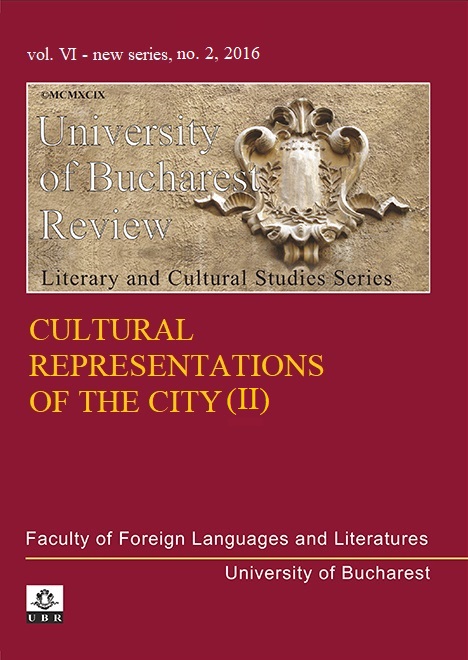THE FALL OF A CITY. HISTORICAL AND
LITERARY PERSPECTIVES ON THE DESTRUCTION OF
DRESDEN IN KURT VONNEGUT’S
SLAUGHTERHOUSE-FIVE
THE FALL OF A CITY. HISTORICAL AND
LITERARY PERSPECTIVES ON THE DESTRUCTION OF
DRESDEN IN KURT VONNEGUT’S
SLAUGHTERHOUSE-FIVE
Author(s): Olivia ChiroboceaSubject(s): Cultural history, Fiction
Published by: Editura Universităţii din Bucureşti
Summary/Abstract: This paper discusses an important historic event which gave rise tonumerous controversies as to its moral and strategic justification, the high deathtoll, and the manner in which it was executed. The bombing of Dresden at the end ofthe Second World War was inflicted by the Allied troops, namely British andAmerican planes that dropped a huge amount of incendiary bombs which completelydestroyed the city and killed over 20,000 people in two days of relentless air-raids.This paper gives context with a short introduction about the history and symbolismof the urban space throughout human existence, as well as its military history andthe way in which conflicts shaped cities or adapted to their conditions. Dresden isalso contextualized with a few facts about its history up to the Second World War,the nexus of culture and art that it was and what it represented for the world, as wellas with a few details about its involvement in the war itself, its strategic position.The aim of this paper is to analyze two perspectives of the same event, namely, theofficial version written in reports, documents and chronicles, and the fictionalizedversion written by an actual witness to this horrific event as a way to heal histrauma, Kurt Vonnegut in his 1969 novel, Slaughterhouse-Five.
Journal: University of Bucharest Review. Literary and Cultural Studies Series
- Issue Year: VI/2016
- Issue No: 2
- Page Range: 75-88
- Page Count: 14
- Language: English

